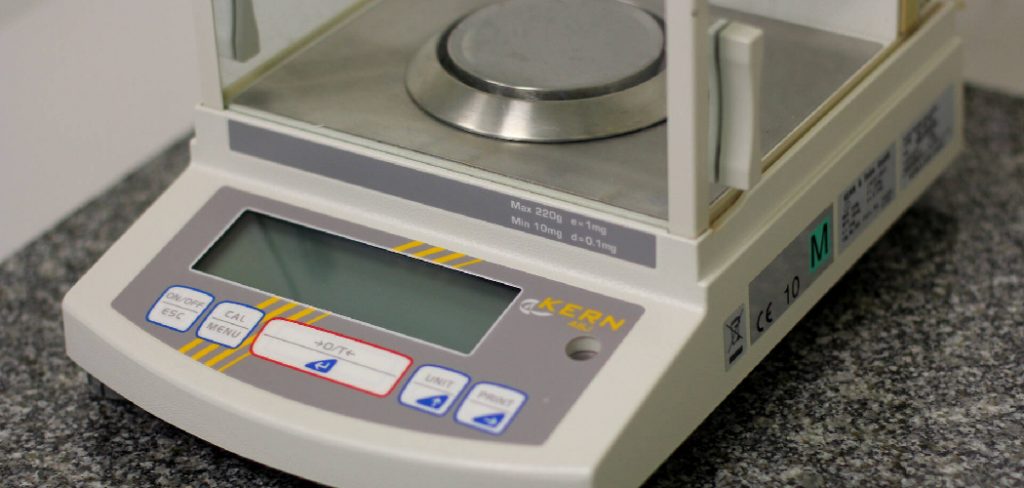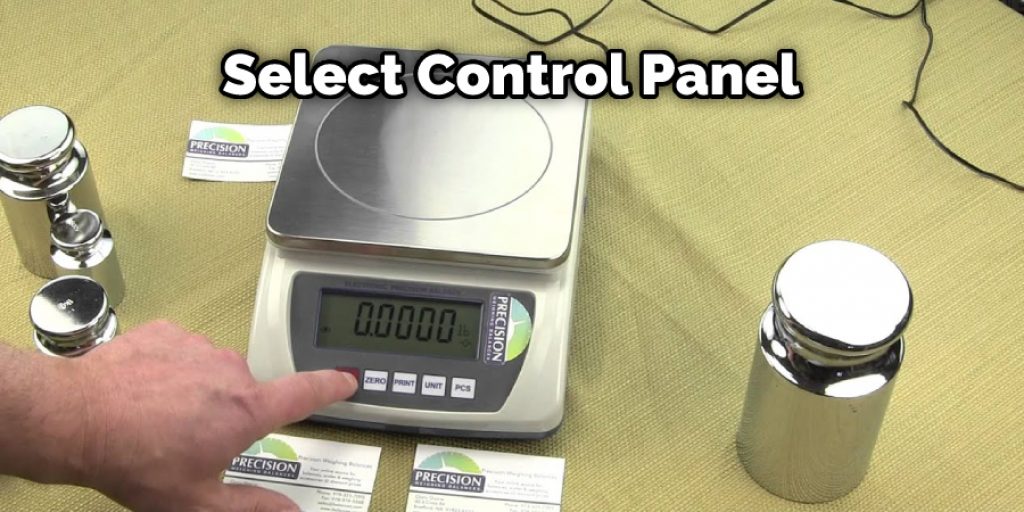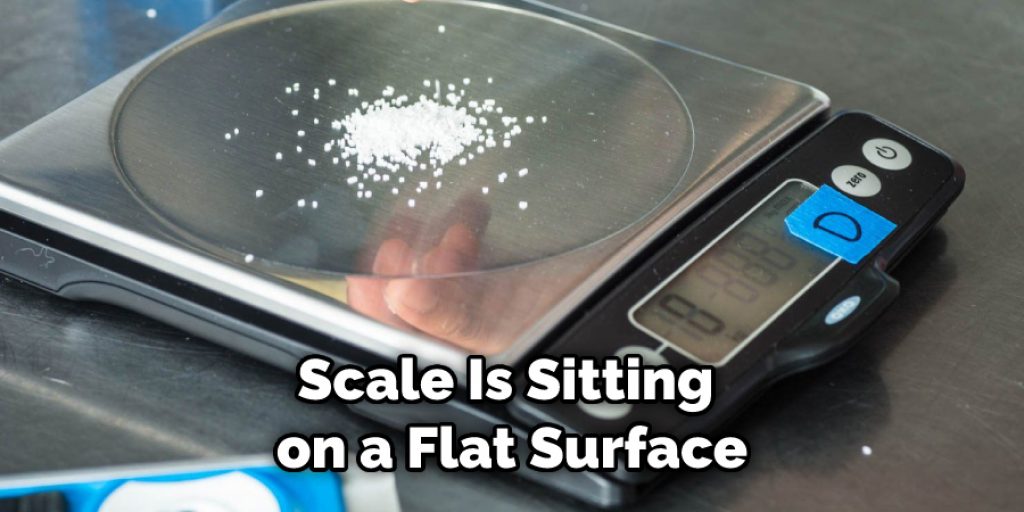You may have noticed that your digital scale has slowly drifted over time. This can be a frustrating problem, but luckily there are a few ways to correct it. In this blog post, we’ll discuss some of the causes of digital scale drift and show you how to fix digital scale drift. Stay tuned for more tips on how to get the most accurate measurements from your digital scale!

Summary: Digital scale drift occurs when the scale gives inaccurate readings. To fix this, you must first determine the source of the issue. Clean the scale’s sensors, replace the batteries and test to see if it is working properly. If not, calibrate the scale or contact the manufacturer for further assistance.
What Is a Digital Scale Drift
A digital scale drift is when a digital scale gradually loses accuracy over time. This can happen for several reasons, such as dust accumulation, temperature changes, or simply because the sensors in the scale start to wear out.
While a small amount of drift is to be expected with any digital scale, it can become a problem if it affects the accuracy of your measurements. However, there are a few ways to deal with scale drift, such as recalibrating the scale regularly or using a “drift compensation” feature (if available).
In any case, it’s important to be aware of the potential for drift to take steps to minimize its impact on your work.
Why It’s Important to Fix Digital Scale Drift
Losing weight is all about being precise and consistent. That’s why having an accurate digital scale is crucial. Even the slightest miscalculation can throw off your whole plan. Over time, all scales will drift out of calibration, but digital scales are particularly susceptible to this problem.
If your scale is off by even a few ounces, it can throw your entire weight loss plan off course. Fortunately, you can do a few simple things to fix digital scale drift.
To use a scale correctly, you should first make sure that it is level. An uneven surface can cause the scale to give inaccurate readings. Second, you should clean the scale regularly with a soft cloth or brush. Dirt and debris can build up on the sensors and cause the scale to give incorrect readings.
Finally, calibrate the scale according to the manufacturer’s instructions. This will ensure that the scale is giving you accurate readings. To convert from troy ounces to grams, multiply the number of troy ounces by 31.1 (the troy ounce is about 10% heavier than the “regular” ounce used in the United States).
By following these simple tips, you can keep your digital scale accurate and help ensure that your weight loss plan is on track.
How to Fix Digital Scale Drift Step by Step Guide
Step 1: Gather Necessary Tools and Materials
To fix digital scale drift, you will need the following tools and materials:
- Soft brush or cloth for cleaning
- Calibration weights (compatible with your scale)
- Flat, stable surface for calibration
- Protective gloves and safety glasses
- User manual for your digital scale
Step 2: Inspect the Scale for Damage or Debris
Inspect the digital scale for any visible damage or debris that could be causing the drift. This may include scratches or cracks on the weighing platform, dust or dirt buildup, or damage to the internal components. If you find any damage, address the issue accordingly or consult the manufacturer for assistance.
Step 3: Clean the Scale
Using a soft brush or cloth, gently clean the weighing platform and surrounding area to remove any dust, dirt, or debris that could interfere with the scale’s accuracy. Avoid using harsh chemicals or abrasive materials, as they may damage the scale.
Step 4: Position the Scale on a Flat, Stable Surface
Place the digital scale on a flat, stable surface to ensure accurate readings. Uneven or unstable surfaces can cause the scale to drift or give inaccurate results. If necessary, use a bubble level to confirm that the surface is level and make adjustments as needed.
Step 5: Initialize the Scale
Turn the digital scale on and allow it to initialize. Most scales will display a series of numbers or symbols during the initialization process. Consult the user manual for your specific scale to understand what the displayed symbols mean and ensure that the scale is functioning correctly.
Step 6: Tare the Scale
Once the scale has initialized, press the “tare” or “zero” button to reset the scale to zero. This will ensure that the scale starts at zero before calibration and will help to eliminate any drift.
Step 7: Calibrate the Scale Using Calibration Weights
Consult the user manual for your specific scale to determine the appropriate calibration procedure and the required calibration weights. Generally, the calibration process involves the following steps:
a. Press and hold the “calibrate” or “mode” button on the scale until the display shows “cal” or a similar message.
b. Place the required calibration weight on the weighing platform.
c. Wait for the scale to register the weight and display a confirmation message or return to the main weighing mode.
d. Remove the calibration weight and press the “tare” or “zero” button to reset the scale to zero.
Step 8: Test the Scale for Drift
After calibrating the scale, test it for drift by placing a known weight on the weighing platform and observing the displayed weight. If the scale is still experiencing drift, repeat the calibration process. If the issue persists, consult the manufacturer for assistance.
Step 9: Perform Regular Maintenance to Prevent Drift
To prevent digital scale drift, perform regular maintenance, such as:
- Cleaning the scale regularly to remove dust, dirt, and debris.
- Calibrating the scale periodically, as recommended by the manufacturer.
- Storing the scale in a dry, temperature-controlled environment to prevent damage from humidity or temperature fluctuations.
By following these steps and using the appropriate tools and techniques, you can effectively fix digital scale drift and ensure accurate and consistent measurements. Regular maintenance and prompt attention to any issues will help extend the life of your digital scale and maintain its accuracy and reliability for years to come.
How to Fix Digital Scale Drift (Software Problem)
Step 1: Open the Start Menu
Open the “Start” menu and select “Control Panel.” Next, choose “Appearance and Personalization” and “Adjust Screen Resolution.” Next, find the “Advanced” settings tab and click on it.

Step 2: Find the “Digital Scale Drift Correction”
Find the “Digital Scale Drift Correction” setting. This is usually found under the “General” tab. Select it and click on the “Enable” button.
Step 3: Reboot Your Computer
Restart your computer for the changes to take effect. You may need to calibrate your digital scale again after this change. If the problem persists, contact the scale’s manufacturer for further assistance.
Digital scale drift can be frustrating, but it is often easily fixed. You can quickly and easily fix this issue by following the steps above.
Why Can’t the Manufacturer Fix Scale Drift
Scale drift is the gradual change in the size or position of an object on a screen. It is a very common problem with displays, and it can be extremely frustrating for users. Unfortunately, scale drift is often caused by hardware changes that are out of the manufacturer’s control.
For example, changes in temperature or humidity can cause the expansion or contraction of the display panel, which can lead to scale drift. Additionally, cleaning or replacing the display panel can also cause scale drift.
In some cases, it may even be caused by a simple software update. While the manufacturer may be able to provide a fix for scale drift, it is often not possible to eliminate the problem.
What Are the Best Practices for Scale Drift
Scale drift is the tendency for a scale to move off the original surface during weighing. This can happen due to several factors, such as static electricity, air currents, or even vibrations from passing traffic.
While it’s important to take measures to prevent scale drift, it’s also important to know how to deal with it if it does occur. The first step is to identify the source of the problem. For example, if the scale is located near a door or window, try to find a way to block the drafts. If vibrations are causing the drifting, try placing the scale on a sturdy surface.
Once you’ve identified the source of the problem, you can take steps to mitigate it. For example, you might use an anti-static spray on the scale before weighing. Or, if vibrations are an issue, you could try using a heavier weight on the scale to help keep it in place.

How to Monitor Scale Drift Changes
If you have a digital scale, you’re probably aware that they can be subject to drift over time. Drift is when the readings on your scale slowly become inaccurate. This can happen for several reasons, including changes in temperature or humidity or simply because the scale is getting old.
While it’s not usually a huge problem, drift can become an issue if you’re trying to weigh something precisely. Fortunately, you can do a few things to help mitigate drift and keep your scale accurate.
First, it’s important to monitor the changes in your scale’s readings over time. This can be done by weighing yourself or an object on the scale at regular intervals and recording the results.
If you notice that the readings are slowly becoming inaccurate, there are a few things you can try to fix the problem.
One possible cause of drift is temperature changes. If your scale is in a room that gets hot or cold, it can affect the accuracy of the readings. Try to keep your scale in a stable environment, away from any drafts or extreme temperatures.
Another possible cause of drift is humidity. If the air in your room is very dry or very humid, it can also affect your scale’s readings. So again, keep your scale in a stable environment with moderate humidity.
How to Avoid Common Errors in Measuring
Measuring is an essential skill in many professions, from cooking and baking to carpentry and construction. Yet even the most experienced professionals can sometimes make mistakes when measuring ingredients or materials. To avoid common errors, it is important to consider when choosing and using measuring tools.

For example, when measuring liquids, be sure to use a marked container with measurements in fluid ounces or milliliters. In addition, use a spoon or other utensil designed for measuring rather than trying to estimate the amount with a regular kitchen spoon.
When measuring dry ingredients such as flour or sugar, use a level scoop or cup rather than packing the ingredient into the measuring tool. Finally, when using a ruler or tape measure, align the tool with the edge of the object being measured.
By taking care when measuring, you can avoid common errors and ensure that your ingredients or materials are correctly sized.
How a Manufacturer Could Handle the “problem” of Drift
The “problem” of product drift has plagued manufacturers for years. Therefore, it is important to understand what causes product drift and how it can be prevented to combat this issue effectively. Drift occurs when a product is applied outside the intended area, resulting in wasted product and potential damage to nearby surfaces.
The most common cause of drift is wind, blowing products off-target and into sensitive areas. To prevent this from happening, manufacturers must ensure that their products are properly applied.
This can include using low-drift nozzles on application equipment, incorporating windbreaks into the design of the application process, and providing clear instructions to users on how to apply the product correctly. By taking these measures, manufacturers can help to prevent product drift and keep their products on target.
Frequently Asked Question
How to Prevent It from Happening Again?
If your digital scale has drifted, you can do a few things to prevent it from happening again. First, make sure that the scale is placed on a level surface. Second, calibrate the scale regularly to ensure accuracy. Finally, contact the manufacturer for assistance if you notice the scale drift happening again.
Why Does My Scale Keep Jumping?
There are a few potential reasons your digital scale may be drifting or jumping. One reason may be that the scale is not level. First, make sure that your scale is sitting on a flat surface, and use a spirit level to check that it is horizontal. If it is not, try adjusting the feet of the scale until it is level.

How Do You Rebalance Scales?
If you have a digital scale drifting, you will need to rebalance the scales. This can be done by moving the weights on one side of the scale to the other side. But, again, make sure that you use an equal amount of weight on each side of the scale.
Conclusion
In conclusion, digital scale drift can be fixed by calibrating your scales regularly and checking the environment in which they are being used. If you follow these simple tips, your scales will provide accurate measurements every time. Have you had any issues with digital scale drift? Let us know in the comments below! Thanks for reading our post about how to fix digital scale drift.
